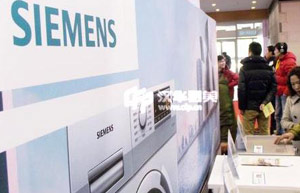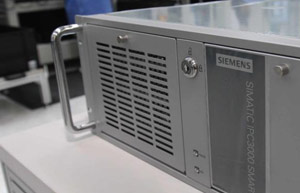Connecting digital steps to smart growth
By Meng Jing (China Daily) Updated: 2014-11-07 12:35Each worker at the 3,100 - square-meter factory floor has an account on the digital system and at least one screen for each of them to receive orders and production guidance from computers. The entire production process is paperless and much faster than conventional factories.
The key to making this smart manufacturing happen is the collaborative digital platform that is based on PLM software, which is widely used by auto, aerospace and aviation companies. As many as 19 out of the top 20 aviation companies in the world use Siemens' PLM software, including Boeing and Airbus, said Grindstaff.
"By using the three-dimensional simulation software from Siemens PLM, we have been able to better simulate the movement of robots and deploy them in the correct slots on production lines. It has helped us to deliver any kind of project to customers within one year," said Ding Yudong, mechanical design manager of Comau (Shanghai) Engineering Co Ltd.
Ding's company, which provides tailor-made robotized production lines to auto makers in China, said the software simulates work scenarios for robots based on customer demands, a critical component for today's automotive industry.
The data generated during the design, innovation and production processes are stored in digital platforms, which helps ensure seamless communication between innovation and production. Employees who work in different domains, different offices and different countries can share the information and benefit from the collaborative platform, he said.
Though the Chengdu digital factory has been operational for just a year, it has already made significant achievements like "fast to the market", and "high delivery performance" with quality defect rate as low as less than 15 out of 1 million.
According to a report released by The Boston Consulting Group in September, more than half of the US-based manufacturing executives at companies with sales of more than $1 billion are planning to return production to the US from China or are actively considering it. The share of executives who are planning to "reshore" or are considering it rose to 54 percent, compared with 37 percent in a survey in 2012.
The top three factors cited as driving future decisions on production locations were labor costs, proximity to customers, and product quality .
As the manufacturing industry moves ahead, employees will find that they will have "less repetitive tasks and more thinking tasks", he said.
Grindstaff said that Chinese companies like Zoomlion Heavy Industry Science & Technology Development Co Ltd and Haier Group have been at the forefront of the PLM race in China with their enhanced focus on high quality and boldness in embracing new technologies. "As they expand their capabilities and become world leaders in their respective sectors, they will have to make products that are smarter and better. So our technology becomes crucial for them," said Grindstaff.
"China is big, diverse and growing fast. It is important for us to keep pace with the changing dynamics in China. We cannot depend on the things that we did in the past to drive success. What it also means is that we need to have deep and strategic engagements with our Chinese customers," he said.
 |
 |
| Top 10 German enterprises operating in China | Siemens, BAIC join hands to boost new energy cars' market |
- Cash crunch fans expectation on RRR cut
- US extends antidumping duties on China's thermal paper
- Modern food van with ancient look in Shanghai
- China home prices continue to cool in November
- Asia's top 3 billionaires all Chinese
- Old investment remedy the treatment for China's "new normal"
- China's solar sector opposes US anti-dumping ruling
- BMW to recall 846 cars in China
















